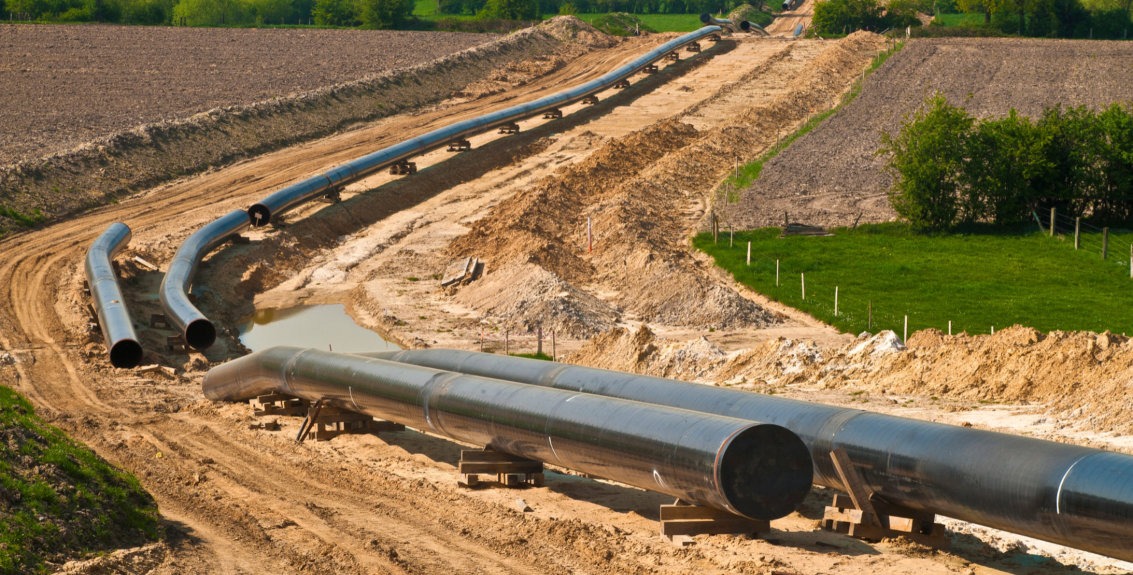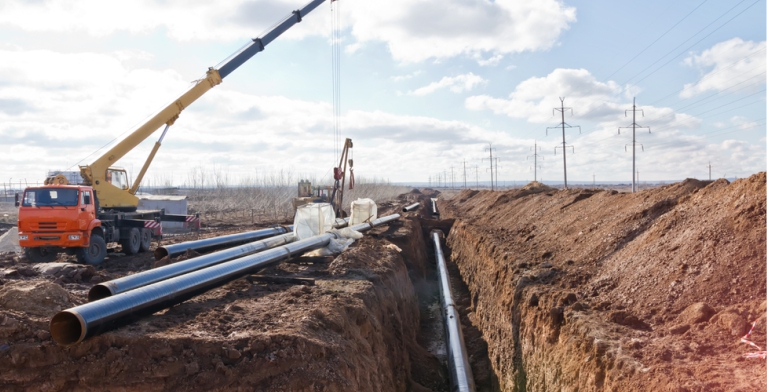How to Prepare When Hiring Creek Pipe roustabout Teams
Wiki Article
Comprehending the Basics of Pipes Installation: What You Required to Find Out About the Refine
Correct pipe installation is essential for any kind of plumbing system. It requires mindful factor to consider of numerous aspects, consisting of material option and adherence to local guidelines. A tactical design can protect against issues like pressure loss, while the right tools ensure efficient signing up with strategies. Also experienced installers can make usual mistakes. Understanding these essentials can lead to an extra efficient and durable system, motivating a better take a look at the key components associated with the process.Choosing the Right Products for Pipe Installation
When taking into consideration pipe installation, the selection of ideal products is vital to making certain toughness and performance. Various materials are readily available, each offering one-of-a-kind benefits and considerations. For instance, PVC pipelines are light-weight, immune to rust, and cost-efficient, making them perfect for domestic plumbing. Conversely, copper pipelines, known for their durability and capacity to hold up against heats, are frequently liked for heating systems.Additionally, galvanized steel pipelines provide toughness and durability, ideal for sturdy applications, although they are at risk to corrosion over time.For below ground installations, polyethylene pipelines are preferred because of their flexibility and resistance to stress breaking. Appropriate material selection depends upon the certain requirements of the task, consisting of stress ratings, temperature level variants, and the chemical nature of the liquids being carried - Creek Pipe Texas oilfield. Eventually, educated options relating to pipe products add substantially to the total success and durability of pipes systemsComprehending Local Building Codes and Regulations
Just how can understanding local building codes and guidelines influence pipe installation? Familiarity with these codes is crucial for ensuring that pipe setups are risk-free, certified, and effective. Neighborhood building ordinance outline particular demands relating to products, installation methods, and precaution, which should be complied with in order to avoid prospective legal problems and expensive fines.Failure to conform can lead to inspections being stopped working, delays in job conclusion, or also mandated elimination of poorly mounted pipelines. Additionally, recognizing zoning legislations and guidelines can affect the sort of materials enabled, as well as the methods used for installation.Contractors and property owners alike ought to invest time in reviewing local regulations prior to starting any kind of installation task. This aggressive strategy not just advertises security however likewise improves the overall quality and sturdiness of the pipes system, eventually promoting long-lasting capability and fulfillment.Preparation Your Pipe Layout and Design
Appropriate preparation of pipe design and layout is vital for attaining a reliable pipes system. This procedure starts with reviewing the specific needs of the space, taking right into account the area of fixtures and appliances. Accurate dimensions assure that pipelines are appropriately directed, lessening bends and turns that can lead to push loss.Consideration of the circulation rates and the types of products utilized is critical, as different materials have differing resilience and compatibility with pipes systems. Furthermore, the developer ought to make up future growths or modifications to the design, allowing for versatility in instance of renovations.Efficient drain and air flow are additionally significant elements of the layout, as they avoid blockages and assure correct waste elimination. Finally, cooperation with local building ordinance guarantees compliance and security, which is vital in any type of pipes installation job.Crucial Devices and Equipment for Installation
Effective pipe installation depends upon having the right tools and tools at hand. Essential devices include pipe cutters for clean cuts, wrenches for tightening fittings, and pliers for grasping and turning pipelines. Additionally, a level warranties pipelines are mounted evenly, while a determining tape help in attaining exact lengths.For certain products, a soldering iron might be essential for copper pipes, while a PVC cutter is vital for plastic alternatives. Safety tools, such as handwear covers and goggles, secures installers from possible hazards throughout the process.A pipeline bender can be especially useful for producing smooth curves without compromising honesty, while a torque wrench guarantees that connections are safeguarded to the maker's specifications.Having these tools easily offered not only promotes a smoother installation process yet likewise adds to the general longevity and performance of the pipes system. Appropriate tools is critical in attaining durable results.Techniques for Proper Pipe Joining and Securing
Attaining a safe and leak-free link between pipes needs mindful interest to signing up with and sealing strategies. Various methods exist, each suited to different pipe materials and applications (Creek Pipe HDPE installation). Welding is often utilized for metal pipelines, guaranteeing durable links through warmth fusion. On the other hand, plastic pipes benefit from solvent concrete or combination welding, producing strong, irreversible bonds.Threaded connections are usual in both metal and plastic piping, requiring exact alignment and using suitable sealants, such as Teflon tape or pipe dope, to avoid leaks. Compression fittings offer one more alternative, where mechanical stress safeguards the pipes together, making them easily dismantled for maintenance.Regardless of the method chosen, proper preparation is essential. This consists of cleaning pipe finishes and ensuring they are without debris. Implementing these methods carefully will enhance the durability and integrity of the pipe system, eventually adding to its reliable performanceTypical Mistakes to Prevent During Installation
Throughout pipe installation, preventing typical blunders is essential for guaranteeing a dependable and efficient system. One constant error is falling short to measure and reduce pipes precisely, which can lead to inappropriate fittings and leakages. In addition, overlooking to inspect the compatibility of products can lead to corrosion or various other damages in time. Poorly securing joints and links can additionally develop weak points in the system, triggering prospective failures.Another common mistake is ignoring the relevance of slope and drain; pipes must be mounted at the proper angle to assist in proper flow. Inadequate assistance for pipelines can cause sagging and stress, affecting the stability of the system. Ultimately, disregarding regional codes and laws can lead to costly rework and safety and security threats. By being conscious of these risks, installers can significantly improve the longevity and efficiency of pipe systems.Maintenance Tips for Lasting Pipe Equipments
To guarantee the longevity of pipe systems, regular examinations and cleaning are vital practices. These measures aid identify prospective issues before they intensify right into significant troubles. Additionally, utilizing appropriate insulation methods can even more secure pipelines from temperature fluctuations and environmental elements.Normal Inspections and Cleaning Up
Normal examinations and cleaning are necessary for preserving the long life and efficiency of pipe systems. Frequently taking a look at pipes for indications of deterioration, leakages, or obstructions can assist recognize possible concerns prior to they escalate into costly repairs. Cleaning up pipelines regularly eliminates build-up that can restrict flow and advertise damage. It is recommended to schedule evaluations at the very least yearly, however a lot more regular checks might be needed in high-usage atmospheres. Using expert services for extensive cleaning guarantees that all debris is efficiently gotten rid of. In addition, maintaining documents of assessments and maintenance activities aids in tracking the system's wellness with time - Creek Pipe Company. By prioritizing these techniques, property proprietors can improve the reliability and lifespan of their pipe systemsCorrect Insulation Methods
Effective insulation strategies play a crucial function in preserving the efficiency and long life of pipe systems. Appropriate insulation minimizes heat loss in hot water pipes and prevents cold in cold water pipelines, significantly reducing power costs and possible damage. Usual materials made use of for insulation include fiberglass, foam, and rubber, each offering differing degrees of thermal resistance. It is crucial to ensure that insulation is used consistently, covering all subjected locations without gaps. In addition, securing insulation with ideal fasteners aids maintain its setting and effectiveness gradually. Regular assessments should be carried out to identify deterioration, assuring timely replacements. By implementing these methods, pipe systems can run efficiently and have a prolonged solution life, ultimately profiting both the environment and the house owner.
Frequently Asked Questions
Exactly how Do I Establish the Appropriate Pipe Size for My Project?
Identifying the proper pipe dimension includes reviewing the project's flow requirements, pressure specs, and the kind of fluid being delivered. Consulting layout standards and conducting calculations guarantees perfect performance and effectiveness in the installation process.What Are the Environmental Effects of Different Pipe Materials?

Can I Install Pipes Myself or Should I Hire a Professional?
The question of whether to install pipelines independently or hire a professional frequently depends on the individual's ability degree and job intricacy. An expert may guarantee compliance with policies and decrease possible long-term concerns.
The Length Of Time Can I Expect My Pipe Installation to Last?
Creek Pipe trenching services The longevity of pipe installation varies considerably, generally lasting 20 to 100 years, depending on materials, installation quality, and upkeep. Normal examinations and correct treatment can improve toughness and stop early failures.
What Are the Indications of a Failing Pipe System?
Indications of a stopping working pipe system consist of regular leaks, unusual water pressure changes, discolored water, mold development, and relentless wetness. Home owners need to check these indications to prevent expensive damage and guarantee timely fixings are made.Report this wiki page